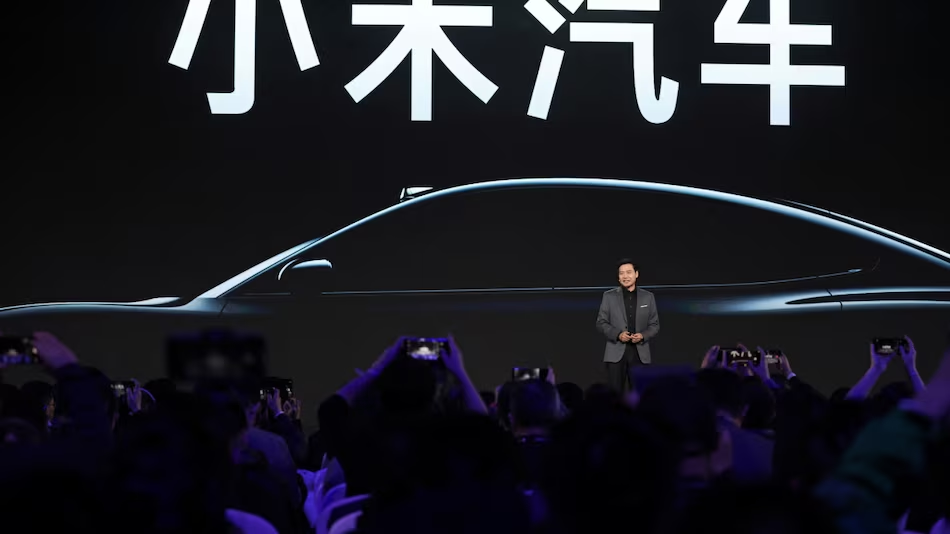
Xiaomi introduces SU7, its first electric vehicle, eyeing a spot among top 5 global automakers with a $10B investment in autos. (Reuters)
Xiaomi, the renowned Chinese smartphone manufacturer, unveiled its inaugural electric vehicle, the SU7, on Thursday, marking the company's foray into the automotive industry with aspirations to rank among the top five global automakers.
Anticipation surrounds the SU7 sedan, projected to leverage its shared operating system with Xiaomi's popular smartphones. However, its launch coincides with a challenging period in the world's largest auto market, grappling with excess production capacity and dwindling demand that have fueled a fierce price competition.
Despite these industry challenges, Xiaomi's CEO Lei Jun articulated ambitious goals, expressing the company's vision to craft a "dream car" comparable to esteemed brands like Porsche and Tesla. Lei outlined a strategic roadmap, aiming to solidify Xiaomi's position among the world's leading automakers over the next 15 to 20 years, contributing to the advancement of China's automotive sector.
Following its 2021 announcement signalling a shift towards electric vehicles, Xiaomi has joined the league of technology companies diversifying beyond their core businesses. To materialize its automotive ambitions, the company has committed a substantial $10 billion investment over the next decade. Notably, Xiaomi stands out as one of the few new entrants in China's electric vehicle market, where regulatory authorities have hesitated to exacerbate the existing oversupply.
During the vehicle's launch event in Beijing, Lei emphasized the pioneering role of Xiaomi cars in autonomous driving technology, positioning the brand at the forefront of automotive innovation.
Manufacturing of Xiaomi-branded vehicles will take place in a Beijing factory operated by a subsidiary of the state-owned automaker BAIC Group, with an annual production capacity set at 200,000 vehicles. This strategic partnership underscores Xiaomi's intent to navigate the automotive landscape leveraging established industry expertise.
Xiaomi's debut in the electric vehicle arena signals its commitment to diversification and technological innovation, marking a significant step in its evolution beyond the realm of smartphones into the competitive automotive industry.















